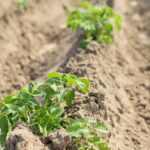Are you interested in preparing soil for gardening vegetables? Proper soil preparation is essential for the successful growth of vegetables in your garden. Understanding the importance of soil preparation and taking the necessary steps to assess, clear, amend, and maintain your soil can significantly impact the health and yield of your vegetable garden.
Assessing the quality and composition of your soil is the first step in preparing it for gardening. By understanding the specific needs of your soil, you can make informed decisions about how to improve its fertility and structure to support healthy vegetable growth. Clearing and preparing the garden bed is also crucial, as removing debris and preparing the soil for planting sets the stage for a successful growing season.
In addition to clearing and preparing the garden bed, amending the soil is another important aspect of soil preparation. Techniques such as adding compost, mulch, and organic matter can improve soil quality and fertility, providing essential nutrients for healthy vegetable growth. Understanding the importance of pH balancing and choosing the right vegetables for your specific soil type are also key considerations when preparing your garden for successful vegetable cultivation.
Assessing Your Soil
Conducting a Soil Test
Before you begin planting your vegetable garden, it is important to assess the quality and composition of your soil. One of the most effective ways to do this is by conducting a soil test. A soil test will provide valuable information about the pH level, nutrient content, and overall health of your soil.
You can purchase an at-home soil testing kit or send a sample to a professional laboratory for analysis. By understanding the specific needs of your soil, you can make informed decisions about how to best prepare it for growing vegetables.
Identifying Soil Texture
Another important aspect of assessing your soil is determining its texture. The texture of your soil – whether it is sandy, loamy, or clayey – will directly impact how well it retains moisture and nutrients. To identify the texture of your soil, simply take a handful of damp soil and squeeze it in your hand.
Sandy soil will feel gritty, while clayey soil will feel smooth and sticky. Loamy soil will have a soft, crumbly texture that holds together when squeezed. Understanding the texture of your soil will help you make appropriate amendments to improve its structure for vegetable gardening.
Observing Drainage Patterns
In addition to conducting a soil test and identifying its texture, it is also crucial to observe the drainage patterns in your garden area. Proper drainage is essential for healthy plant growth, as waterlogged or poorly-draining soils can lead to root rot and other issues.
After a heavy rainfall or watering, take note of any areas where water pools or takes an excessive amount of time to drain away. This information will help you determine if further actions are necessary to improve drainage before planting your vegetables.
By conducting a thorough assessment of your soil’s quality and composition, you can effectively prepare the ground for gardening vegetables that are healthy and productive.
Clearing and Preparing the Garden Bed
When it comes to preparing soil for gardening vegetables, one of the essential steps is clearing and preparing the garden bed. This process involves removing debris and ensuring that the soil is well-prepared for planting. By taking the time to properly clear and prepare the garden bed, you can create an optimal growing environment for your vegetable plants.
Removing Debris
Before you can begin preparing the soil for planting, it’s important to first remove any debris from the garden bed. This includes things like rocks, sticks, and other organic matter that may be covering the soil. Removing debris not only creates a clean canvas for planting but also helps to prevent potential obstacles for plant roots as they grow.
Tilling and Amending
Once the debris has been cleared, it’s time to till and amend the soil. Tilling helps loosen compacted soil, making it easier for plant roots to penetrate and access nutrients. Additionally, adding compost or organic matter during this process can help improve soil structure and fertility, providing essential nutrients for your vegetable plants.
Leveling and Raking
After tilling and amending the soil, take the time to level and rake the garden bed. This will ensure that the soil surface is even and ready for planting. Leveling also helps with water distribution, preventing pooling in certain areas of the garden bed. Raking can help break up large clumps of soil and create a smooth surface for planting seeds or transplants.
By following these steps for clearing and preparing the garden bed, you can set the stage for a successful vegetable garden. Taking the time to properly prepare your soil will provide your plants with a healthy growing environment, leading to bountiful harvests throughout the growing season.
Amending the Soil
When it comes to preparing soil for gardening vegetables, one of the most crucial steps is amending the soil to improve its quality and fertility. This is especially important if your soil is lacking in essential nutrients or organic matter. Fortunately, there are several techniques for amending the soil that can help you create an optimal growing environment for your vegetable garden.
One of the most effective ways to improve soil quality is by adding compost. Compost is a rich, organic material that provides essential nutrients to the soil and improves its structure.
You can either purchase compost from a garden center or create your own using kitchen scraps, yard waste, and other organic materials. Simply spread a layer of compost over your garden bed and mix it into the top few inches of soil to provide a nutrient-rich environment for your vegetables.
Another technique for improving soil fertility is by using mulch. Mulch not only helps retain moisture in the soil, but it also adds essential nutrients as it decomposes. Spread a layer of organic mulch, such as straw or shredded leaves, around your vegetable plants to help improve the overall fertility of the soil and prevent weed growth.
In addition to compost and mulch, adding organic matter such as aged manure or leaf mold can also help improve the nutrient content and structure of your soil. Incorporating these materials into the top few inches of soil can provide long-term benefits for your vegetable garden.
Overall, amending the soil with compost, mulch, and organic matter is key to creating a healthy and fertile environment for growing vegetables. By taking the time to improve your soil quality before planting, you can set yourself up for a successful and bountiful harvest.
pH Balancing
Soil pH plays a crucial role in the success of your vegetable garden. Understanding the importance of soil pH and learning how to adjust it is essential for growing healthy and productive vegetables. The pH level of your soil determines its acidity or alkalinity, which in turn affects the availability of nutrients to your plants. Most vegetables grow best in slightly acidic to neutral soil with a pH range of 6.0 to 7.0.
To determine the pH level of your soil, you can use a simple soil test kit available at garden centers or send a sample to a laboratory for analysis. Once you have determined the pH of your soil, you may need to adjust it to create the ideal growing conditions for your vegetables.
If your soil is too acidic, adding ground limestone can help raise the pH level. On the other hand, if your soil is too alkaline, incorporating elemental sulfur can lower the pH.
In addition to adjusting the overall pH level of your soil, it’s important to consider the specific needs of different vegetables. Some plants, like potatoes and blueberries, thrive in more acidic soils with a lower pH, while others such as asparagus and spinach prefer slightly alkaline soils. By understanding the optimum pH ranges for different vegetable varieties, you can tailor your soil preparation efforts to meet their specific requirements.
| Soil Testing Kits | pH Adjusting Materials |
|---|---|
| Available at garden centers | Ground limestone for raising pH levels |
| Soil sample analysis at laboratories | Elemental sulfur for lowering pH levels |
Choosing the Right Vegetables for Your Soil
When it comes to preparing soil for gardening vegetables, one crucial aspect to consider is choosing the right vegetables that are well-suited to your specific soil type. Different types of vegetables have different preferences when it comes to soil composition, drainage, and pH levels. By understanding your soil and selecting the appropriate vegetable varieties, you can maximize the potential for a successful and bountiful harvest.
Before determining which vegetables to plant, assess your soil’s quality and composition. Consider factors such as texture, drainage, and pH levels. For example, if you have clay soil with poor drainage, you may want to avoid planting water-sensitive vegetables like tomatoes and peppers. Instead, opt for vegetables that thrive in moisture-retentive soils, such as leafy greens or root crops like carrots and beets.
Once you have a good understanding of your soil type and its characteristics, you can then begin to choose the right vegetables for your garden. Sandy soils with good drainage are ideal for heat-loving vegetables like peppers, tomatoes, and melons. On the other hand, clay soils with less favorable drainage are better suited for crops like cabbage, broccoli, or Brussels sprouts. Additionally, acidic soils with lower pH levels are suitable for plants like blueberries and potatoes.
In addition to considering your soil type when choosing vegetable varieties, also take into account the local climate and growing conditions in your area. Some vegetables may require specific environmental conditions to thrive, so it’s essential to select varieties that are well-adapted to your region as well as your soil type. By carefully matching vegetable varieties with your soil type and growing conditions, you can set yourself up for a successful and productive vegetable garden.
Soil Preparation Techniques for Raised Beds and Container Gardening
When it comes to preparing soil for gardening vegetables in raised beds and container gardens, there are specific techniques that can help you create a healthy growing environment for your plants. The limited space and controlled environment of raised beds and containers require a slightly different approach to soil preparation compared to traditional in-ground gardening. Here are some essential techniques for preparing soil in raised beds and containers:
1. Choose the right soil: When gardening in raised beds or containers, it’s crucial to use high-quality, well-draining soil. Avoid using regular garden soil, as it may become compacted and hinder root growth. Instead, opt for a mix specifically designed for container gardening, which usually consists of a blend of peat moss, compost, and perlite or vermiculite.
2. Add organic matter: Incorporating organic matter into the soil is essential for maintaining its fertility and structure. Mix in compost or well-rotted manure to improve the nutrient content and overall health of the soil. Organic matter also helps retain moisture, which is especially beneficial in raised beds and containers where the soil dries out more quickly.
3. Consider vertical gardening: In limited space environments like raised beds and containers, vertical gardening can maximize growing area and efficiency. Utilize trellises, stakes, or other supports to grow vining vegetables like tomatoes, cucumbers, and peas vertically. This not only saves space but also allows for better air circulation around the plants.
By following these techniques for preparing soil in raised beds and containers, you can create an optimal growing environment for your vegetable garden. With proper soil preparation, your plants will have the foundation they need to thrive and produce a bountiful harvest throughout the growing season.
Maintaining Healthy Soil for Long-Term Vegetable Gardening Success
Once you have prepared your soil for gardening vegetables and have planted your crops, it is important to continue caring for the soil throughout the growing season. Proper soil maintenance is essential for long-term vegetable gardening success and can contribute to higher yields and healthier plants.
One important aspect of soil care is regular watering. Vegetables require consistent moisture to thrive, so it’s crucial to monitor the soil moisture levels and water as needed. Additionally, adding a layer of organic mulch around the base of plants can help retain moisture, suppress weeds, and improve the overall quality of the soil as it breaks down over time.
In addition to watering and mulching, it’s important to monitor the health of your plants throughout the growing season. Keep an eye out for any signs of nutrient deficiencies or pest infestations, as these issues can affect both plant health and soil quality. Taking proactive measures to address these problems will help maintain healthy soil and ensure a successful vegetable garden.
| Soil Care | Maintenance Throughout the Growing Season |
|---|---|
| Regular watering | Monitor soil moisture levels |
| Applying organic mulch | Retain moisture & improve soil quality |
| Pest control & nutrient monitoring | Address issues affecting plant health & soil quality |
Conclusion
In conclusion, the key to a successful vegetable garden lies in proper soil preparation. By following the steps outlined in this article, gardeners can ensure that their soil is well-suited for growing a variety of vegetables and producing bountiful harvests.
Assessing the quality and composition of the soil, clearing and preparing the garden bed, amending the soil with organic matter, balancing pH levels, and choosing the right vegetables for the specific soil type are all crucial steps in preparing soil for gardening vegetables.
The process of preparing soil for gardening vegetables may seem daunting at first, but it is an essential aspect of successful gardening. By investing time and effort into soil preparation, gardeners can create an environment where their vegetables can thrive and produce high yields. Whether planting directly in the ground or using raised beds and containers, proper soil preparation sets the stage for healthy growth and abundant harvests.
Ultimately, by understanding the importance of preparing soil for gardening vegetables and following through with necessary steps, gardeners can create a fertile environment that supports plant growth and maximizes their vegetable garden’s potential. With careful attention to soil quality, nutrient levels, and pH balance, gardeners can look forward to a season of healthy plants and delicious homegrown produce.
Frequently Asked Questions
What Should I Add to My Soil Before Planting Vegetables?
Before planting vegetables, it’s important to add organic matter like compost or well-rotted manure to the soil. This helps improve soil structure, drainage, and nutrient content, creating a favorable environment for vegetable growth.
How Do You Prepare Potting Soil for Vegetables?
To prepare potting soil for vegetables, start by choosing a high-quality mix specifically formulated for vegetable gardening. Then, ensure the soil is well-draining and aerated by adding perlite or vermiculite. Finally, consider mixing in some organic fertilizer to provide essential nutrients for your vegetables.
When Should I Start Preparing My Garden Soil?
It’s best to start preparing your garden soil several weeks before planting time. This allows enough time to amend the soil with organic matter, test the pH levels, and make any necessary adjustments based on the needs of the specific vegetables you plan to grow. Early preparation sets the stage for a successful growing season.

If you’re looking to get into vegetable gardening, or are just looking for some tips on how to make your current garden better, then you’ve come to the right place! My name is Ethel and I have been gardening for years. In this blog, I’m going to share with you some of my best tips on how to create a successful vegetable garden.





